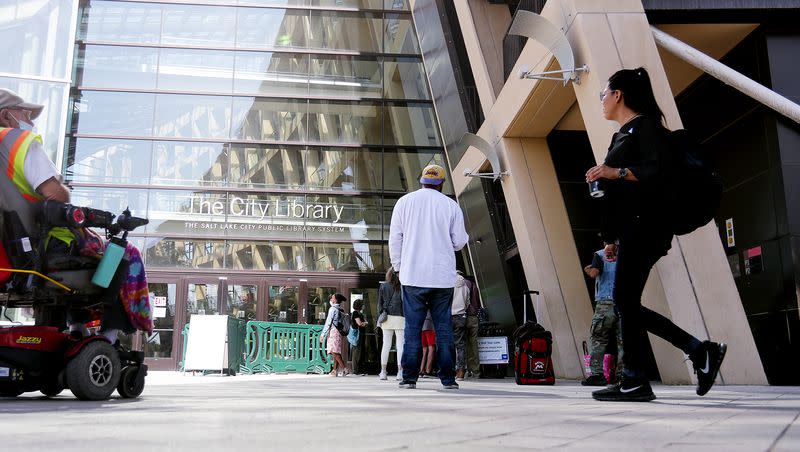These 2 generations visit libraries at higher rates than any other generation

The American Library Association recently published a report on how Gen Z (ages 11-26) and millennials (ages 27-42) use public library resources, adding how younger generations visit libraries at higher rates than older generations.
Portland State University led the study, which surveyed over 2,000 young adults in March 2022. Fifty-four percent of respondents said they’d visited a physical library within the past year, and almost a quarter (23%) of Gen Z and millennials who did not identify as “readers” said they’d also visited a library in the same time frame.
An earlier study conducted by the same researchers in 2020 depicted millennials as the generation with the highest reading rates, but the 2023 study claims, “Gen Zers buy and read slightly more than millennials in all formats.”
However, compared to Pew Research data from 2013, millennials visit libraries more frequently than they did a decade ago, according to the ALA study.
Kathi Inman Berens told ALA, “Libraries are popular among Gen Z and millennials, even among self-identified non-readers. Gen Z and millennials want and need the resources public libraries offer.”
She continued, “Just as they flit between multiple media formats, they also jump between modes of access: libraries to bookstores to influencer posts to subscriptions, and back again. Libraries are a notable way Gen Z and millennials discover books.”
Related
Why are libraries drawing in so many members of Gen Z and millennials?
Research published by Pew Research Center in 2021 explored what format Americans prefer to read by age group. While all groups preferred to read printed books, Gen Z preferred physical copies slightly more than everyone else.
As ALA said, “libraries are the place for robust sampling.”
“Libraries allow people to try out books risk-free,” the study explained. “This, and the role that libraries play in curating and promoting books, mean that libraries bolster publishers’ low marketing budgets — for free.”
Researchers for the 2020 study wrote, “Libraries contribute more to book discovery and purchase than is acknowledged and utilized in the industry,” and showed that over a third (35.9%) of library-goers bought a book they first discovered in a library.
ALA president Emily Drabinski attributes Gen Z’s tendency of visiting libraries in person to the steady move toward offering more services than just physical book rentals.
Libraries are becoming centers for connection and learning
Between 2014 and 2019, participation in library programs increased by 23%, according to Words Rated.
“These digitally-immersed generations make clear that libraries are about more than books,” she explained. “Programming relevant to teens and their parents — coding clubs, job application help, gaming — draws even non-readers to the library, as does the physical space to connect and collaborate.”
Utah libraries offer programs similar to those described by the American Library Association.
The Salt Lake City Public Library has several programs just for teenagers, including volunteer opportunities and arts and crafts programs. It also has book clubs for various ages, extensive book lists and a local branch for the Indie Author Project, which acts as a way for independent authors to connect with their local libraries.
Bookstores vs. libraries
2023 was a success story for independent bookstores in the U.S., per Fortune.
Gen Z prefers to search for new books to read in bookstores rather than in libraries, according to the ALA study. The study also found that 13% of Gen Z and millennials said they bought books to support their local bookstore.
Other factors drawing people to bookstores include their reliable stock of new or popular books that may typically be checked out from libraries, comfortable seating areas and cafes.
Over half (58%) of Gen Z and millennials reported to have bought a book in the past year, and over a third (35%) purchased a book they found browsing in a bookstore, per the ALA study.

